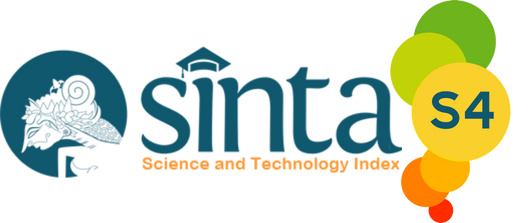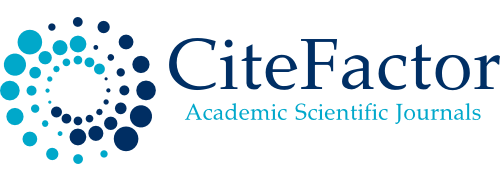Islamic Religious Educators in Society 5.0: Challenges and Strategies for Digital Character Formation in Smart Classrooms
DOI:
https://doi.org/10.35719/aladalah.v28i1.627This article examines how Islamic religious education cultivates digital character within Society 5.0 smart classrooms. Using a library-based study with a descriptive-analytical approach, the review maps the literature onto internal factors (competence and pedagogical paradigm) and external curricular factors (infrastructure, content, and design), and then derives operational strategies. The findings indicate that the challenges are multidimensional. Internally, teachers face uneven information and communication technology competencies, a persistent teacher-centered paradigm, and cultural resistance. Externally, infrastructural disparities, curated digital Islamic religious education content scarcity, and curricula that rarely tether technology to Islamic values weaken classroom practice. This configuration heightens students’ exposure to disinformation, cyberbullying, and soft radicalization; risks dehumanization; and reduces Islamic education teachers to mere device operators. The study proposes reorienting teachers as moral navigators and humanizers of technology, alongside implementing project-based learning and blended–flipped learning methods that explicitly integrate Islamic values into digital practice, so that technology consistently serves the formative aims of Islamic education.
Downloads
References
Adel, A. (2024). The Convergence of Intelligent Tutoring, Robotics, and IoT in Smart Education for the Transition from Industry 4.0 to 5.0. Smart Cities, 7(1), 325–369. https://doi.org/10.3390/smartcities7010014
Alfoudari, A. M., Durugbo, C. M., & Aldhmour, F. M. (2023). Exploring quality attributes of smart classrooms from the perspectives of academics. Education and Information Technologies, 28(10), 13109–13151. https://doi.org/10.1007/s10639-022-11452-3
Arif, M., Aziz, M. K. N. A., & Ma’arif, M. A. (2025). A recent study on islamic religious education teachers’ competencies in the digital age: A systematic literature review. Journal of Education and Learning (EduLearn), 19(2), 587–596. https://doi.org/10.11591/edulearn.v19i2.21311
Arlinda, A. A. D. A. (2024). Challenges in evaluating Islamic education learning in schools: Implications for educational objectives. Tadibia Islamika, 4(1), 1–9. https://doi.org/10.28918/tadibia.v4i1.2277
Askar, A., Nurdin, N., Pettalongi, A., Pettalongi, S. S., & Basire, J. H. I. T. (2025). Online Islamic knowledge sources and their authority in Islamic learning: A case study of Indonesian Muslim universities. Cogent Education, 12(1), 2504236. https://doi.org/10.1080/2331186X.2025.2504236
Bhardwaj, V., Zhang, S., Tan, Y. Q., & Pandey, V. (2025). Redefining learning: Student-centered strategies for academic and personal growth. Frontiers in Education, 10. https://doi.org/10.3389/feduc.2025.1518602
Budiyono, A. E., Wibowo, H., & Pradana, S. (2024). Character Education in the Digital Era: Conceptual Analysis of Technology Integration in the Formation of Student Morals. Quantum Edukatif: Jurnal Pendidikan Multidisiplin, 1(2), 45–50. https://synergizejournal.org/index.php/QE/article/view/18
Cladis, A. E. (2020). A shifting paradigm: An evaluation of the pervasive effects of digital technologies on language expression, creativity, critical thinking, political discourse, and interactive processes of human communications. E-Learning and Digital Media, 17(5), 341–364. https://doi.org/10.1177/2042753017752583
Coertjens, L., Lesterhuis, M., De Winter, B. Y., Goossens, M., De Maeyer, S., & Michels, N. R. M. (2021). Improving Self-Reflection Assessment Practices: Comparative Judgment as an Alternative to Rubrics. Teaching and Learning in Medicine, 33(5), 525–535. https://doi.org/10.1080/10401334.2021.1877709
Dennis, M., & Harrison, T. (2021). Unique ethical challenges for the 21st century: Online technology and virtue education. Journal of Moral Education, 50(3), 251–266. https://doi.org/10.1080/03057240.2020.1781071
Engeness, I. (2021). Developing teachers’ digital identity: Towards the pedagogic design principles of digital environments to enhance students’ learning in the 21st century. European Journal of Teacher Education, 44(1), 96–114. https://doi.org/10.1080/02619768.2020.1849129
Fajrussalam, H., Mansyur, A. S., & Zaqiah, Q. Y. (2020). Gaining Education Character Based on Cultural Sundanese Values: The Innovation of Islamic Education Curriculum in Facing Era Society 5.0. Jurnal Iqra’: Kajian Ilmu Pendidikan, 5(1), 104–119. https://doi.org/10.25217/ji.v5i1.910
Farhan, A. (2025). Tasawuf as a Pedagogical Foundation: Implementing Spiritual Values in Junior High School Education. JOUSIP: Journal of Sufism and Psychotherapy, 5(1), 17–34. https://doi.org/10.28918/jousip.v5i1.11524
Fioravanti, R., Ozimek, D., Rodriguez, J., Zulkosky, K., Costea, D., Good, L., Dolores Davis, D. M., Crothers, J., & Dr., K. M. D. (2024). Bring Your Own Device (BYOD) Student Experiences and Policy Considerations for Nontraditional Colleges. The International Journal of Adult, Community and Professional Learning, 31(2), 21–41. https://doi.org/10.18848/2328-6318/CGP/v31i02/21-41
Harris, J. B., & Hofer, M. J. (2011). Technological Pedagogical Content Knowledge (TPACK) in Action: A Descriptive Study of Secondary Teachers’ Curriculum-Based, Technology-Related Instructional Planning. Journal of Research on Technology in Education, 43(3), 211–229. https://doi.org/10.1080/15391523.2011.10782570
Hendawi, M., & Qadhi, S. (2024). Digital Literacy-Based Learning in Islamic Education. Ar-Fachruddin: Journal of Islamic Education, 1(1), 45–58. https://doi.org/10.7401/j19t2q81
Hidayat, Y., Herniawati, A., Mahmud, M., & Erihadiana, M. (2025). Smart Classroom-Based Learning: Difficulties and Challenges at Islamic Private Higher Education. Journal Corner of Education, Linguistics, and Literature, 4(001), 447–458. https://doi.org/10.54012/jcell.v4i001.407
Hinnant-Crawford, B., Virtue, E., & Bergeron, L. (2024). Pedagogies of Possibility: The Integration of Asset-Based Equity Pedagogies and Project-Based Learning. Interdisciplinary Journal of Problem-Based Learning, 18(1). https://doi.org/10.14434/ijpbl.v18i1.37796
Hutchison, K., Paatsch, L., & Cloonan, A. (2020). Reshaping home–school connections in the digital age: Challenges for teachers and parents. E-Learning and Digital Media, 17(2), 167–182. https://doi.org/10.1177/2042753019899527
Jamilah, S. (2021). Moderate Islamic Education to Enhance Nationalism among Indonesian Islamic Student Organizations in the Era of Society 5.0. Journal of Social Studies Education Research, 12(3), 79–100. https://www.jsser.org/index.php/jsser/article/view/3506
Kessler, M. (2021). Investigating connections between teacher identity and pedagogy in a content-based classroom. System, 100, 102551. https://doi.org/10.1016/j.system.2021.102551
Kurniawan, W., & Annisah, S. (2025). Islamic Moral Education and Character Building in the Era of IoT. Jurnal Al Burhan, 5(2), 311–320. https://doi.org/10.58988/jab.v5i2.529
Leon, C., Lipuma, J., & Oviedo-Torres, X. (2025). Artificial intelligence in STEM education: A transdisciplinary framework for engagement and innovation. Frontiers in Education, 10. https://doi.org/10.3389/feduc.2025.1619888
Ma’mun, N., Hartono, R., Mujiyanto, J., & Pratama, H. (2025). Teacher Identity and Agency Development of an Indonesian Islamic Junior High School: Bourdieu’s Lens. Munaddhomah: Jurnal Manajemen Pendidikan Islam, 6(3), 541–554. https://doi.org/10.31538/munaddhomah.v6i3.1851
Martínez-Bravo, M. C., Sádaba Chalezquer, C., & Serrano-Puche, J. (2022). Dimensions of Digital Literacy in the 21st Century Competency Frameworks. Sustainability, 14(3), 1867. https://doi.org/10.3390/su14031867
Martini, B., Bellisario, D., & Coletti, P. (2024). Human-Centered and Sustainable Artificial Intelligence in Industry 5.0: Challenges and Perspectives. Sustainability, 16(13), 5448. https://doi.org/10.3390/su16135448
Matar, S. (2025). The Development of Educational Technology and Artificial Intelligence and Their Impact on the Future of Education: Opportunities and Risks. Journal of Posthumanism, 5(7), 1271–1292. https://www.ceeol.com/search/article-detail?id=1360166
Minarti, M., Rahmah, M. N., Khalilurrahman, K., Samsir, S., & Mardiana, M. (2023). Utilization of social media in Learning Islamic Religion: Its Impact on Strengthening Student Outcomes and Achievements. Nidhomul Haq: Jurnal Manajemen Pendidikan Islam, 8(2), 279–291. https://doi.org/10.31538/ndh.v8i2.3930
Mufid, A. I., Aminah, S., & Hafid, M. A. (2025). Revitalizing the Role of Teachers in Islamic Education Learning Amidst Technological Developments. Journal of Contemporary Islamic Education, 5(2), 96–108. https://journal.iaimnumetrolampung.ac.id/index.php/cie/article/view/6316
Murtiningsih, S., & Sujito, A. (2025). Reimagining the future of education: Inclusive pedagogies, critical intergenerational justice, and technological disruption. Policy Futures in Education. https://doi.org/10.1177/14782103251341406
Nurhayati, L., Supriadi, U., Jenuri, J., & Karim, A. (2025). Integrating digital citizenship and religious moderation in open and distance education: A holistic approach to character development in Indonesia. Asian Association of Open Universities Journal, 1–16. https://doi.org/10.1108/AAOUJ-02-2025-0025
Pardo-Baldoví, M. I., San Martín-Alonso, Á., & Peirats-Chacón, J. (2023). The Smart Classroom: Learning Challenges in the Digital Ecosystem. Education Sciences, 13(7), 662. https://doi.org/10.3390/educsci13070662
Permana, I. S., & Hasanah, N. A. (2024). Opportunities and Challenges for Islamic Education in Society 5.0. Islam Transformatif : Journal of Islamic Studies, 8(2), 264–281. https://doi.org/10.30983/it.v8i2.8650
Pradonansyah, F. A., Firmansyah, F., & Aryati, A. (2025). The Urgency of Islamic Religious Education Learning Design Development in the Digital Era: Challenges and Implementable Solutions. Indonesian Journal of Islamic Education Studies (INJURIES), 3(2), 99–112. https://doi.org/10.61227/injuries.v3i2.198
Rathore, M. M., Paul, A., Hong, W.-H., Seo, H., Awan, I., & Saeed, S. (2018). Exploiting IoT and big data analytics: Defining Smart Digital City using real-time urban data. Sustainable Cities and Society, 40, 600–610. https://doi.org/10.1016/j.scs.2017.12.022
Sagala, R., & Kandedes, I. (2024). The Role of Islamic Education Teachers in Addressing the Negative Impact of the TikTok on Teenagers in Lampung, Indonesia. Millah: Journal of Religious Studies, 23(2), 947–990. https://doi.org/10.20885/millah.vol23.iss2.art14
Sanusi, M. (2024). Transforming Islamic Education in the Digital Age: Challenges and Opportunities for the Young Generation. Attractive: Innovative Education Journal, 6(3), 206–215. https://doi.org/10.51278/aj.v6i3.1479
Shahidi Hamedani, S., Aslam, S., Mundher Oraibi, B. A., Wah, Y. B., & Shahidi Hamedani, S. (2024). Transitioning towards Tomorrow’s Workforce: Education 5.0 in the Landscape of Society 5.0: A Systematic Literature Review. Education Sciences, 14(10), 1041. https://doi.org/10.3390/educsci14101041
Succarie, A. (2024). Examining the Implications of Islamic Teacher Education and Professional Learning: Towards Professional Identity Renewal in Islamic Schools. Education Sciences, 14(11), 1192. https://doi.org/10.3390/educsci14111192
Suliman, S., Nawangsari, D., & Sutomo, M. (2023). Policy Patterns and The Application of Digital Literacy in Increasing Students’ Religious Motivation. Munaddhomah: Jurnal Manajemen Pendidikan Islam, 4(3), 516–527. https://doi.org/10.31538/munaddhomah.v4i3.363
Thursina, F., & Rusdi, M. (2024). Teachers Challenges and Strategies in Facing the Digitalization Era in Islamic Education in Madrasahs in West Java Region. West Science Islamic Studies, 2(04), 184–190. https://doi.org/10.58812/wsiss.v2i04.1348
Tian, N., & Tsai, S.-B. (2021). An Empirical Study on Interactive Flipped Classroom Model Based on Digital Micro-Video Course by Big Data Analysis and Models. Mathematical Problems in Engineering, 2021(1), 8789355. https://doi.org/10.1155/2021/8789355
Zainudin, Z., Fathoni, A., & Akwam, A. (2025). Islamic Education Integration in the Independent Curriculum: A Character-Building Strategy for Students in Society 5.0. At-Tasyrih: Jurnal Pendidikan Dan Hukum Islam, 11(2), 64–73. https://doi.org/10.55849/attasyrih.v11i2.339
Zhang, F., Subagia, I. W., Artini, L. P., & Wahyuni, D. S. (2025). Optimizing blended learning through AI-powered analytics in digital education platforms: An empirical framework. Future Technology, 4(4), 173–184. https://fupubco.com/futech/article/view/481
Downloads
Section
License
Copyright (c) 2025 Siti Halimah, Nur Fitriah, Naila Marissa, Alfi Nur Chasifah

This work is licensed under a Creative Commons Attribution-NonCommercial 4.0 International License.
This work is licensed under a Attribution-NonCommercial 4.0 International (CC BY-NC 4.0).
























 Al'Adalah licensed under Creative Commons Attribution-NonCommercial 4.0 International License.
Al'Adalah licensed under Creative Commons Attribution-NonCommercial 4.0 International License.